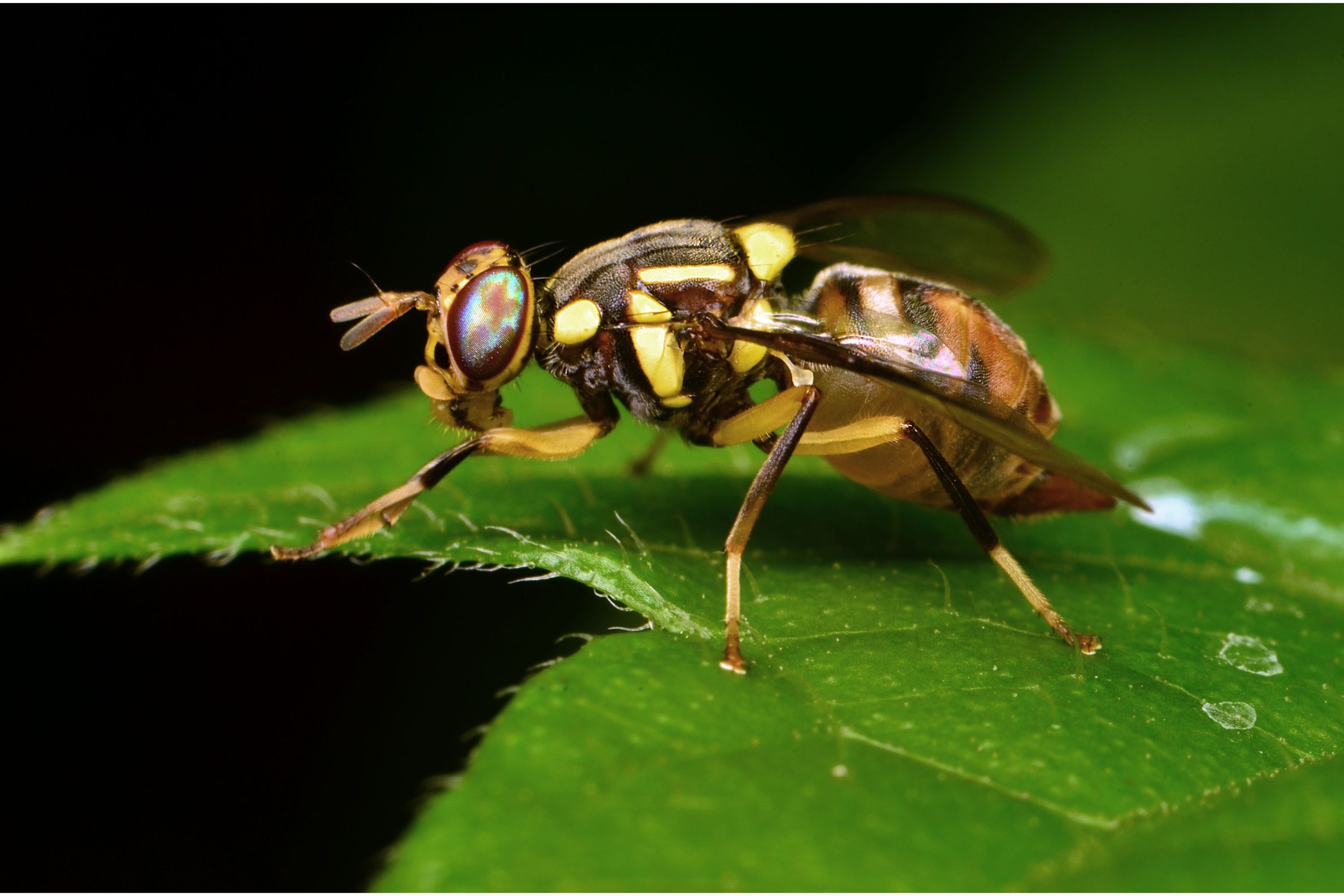Olive fruit fly
(Bactrocera oleae)

Description
The olive fruit fly (Bactrocera oleae) is a species of fruit fly, which belongs to the subfamily Dacinae. It is a phytophagous species, whose larvae feed on the fruit of olive trees, hence the common name. It is considered a serious pest in the cultivation of olives. Until 1998, the fly had not been detected in the United States, and its range coincided with the range of the olive tree in the Eastern Hemisphere: northern, eastern, and southern Africa, Southern Europe, the Canary Islands, India, and western Asia. In the Western Hemisphere, it is currently restricted to California, Baja California, and Sonora. The olive fruit fly was first detected in North America infesting olive fruits on landscape trees in Los Angeles County in November 1998. It can now be found throughout the state of California. In the final years of the 18th century, Italian scientist Giuseppe Maria Giovene (1753–1837), in his work Avviso per la distruzione dei vermi che attaccano la polpa delle olive (1792), provided some suggestions for the peasants, to effectively destroy the fly musca oleae, which infested the pulp of the olive trees. This species is associated with plants of the genus Olea. It is found throughout the Mediterranean basin and in South Africa. Since the late 1990s, it has also been present in California and may have spread throughout the area of olive cultivation in the Nearctic region. It is considered the most serious pest of olives in regions where it lives, significantly affecting both the amount and quality of production in most olive-growing areas. The impact of its attacks tends to worsen in the more humid and cooler growing areas, with significant variations depending on the variety grown, where it affects olive cultivars and areas that have hot summers and less drought. The egg is around 0.7 to 1.2 mm long, elongated, and slightly flattened in its stomach, with a small, white microfleece nodule, which is important for the respiration of the embryo. The larva is Caecilian and has a conical-cylindrical, narrow front. It develops through three stages (larva, first, second and third stage). The mature larva is 6–7 mm long, white-yellowish in colour, elongated, and subconical. The front sensors are bipolar and the second conic feature, the rear sensor, has eight sensilla.
Taxonomic tree:







